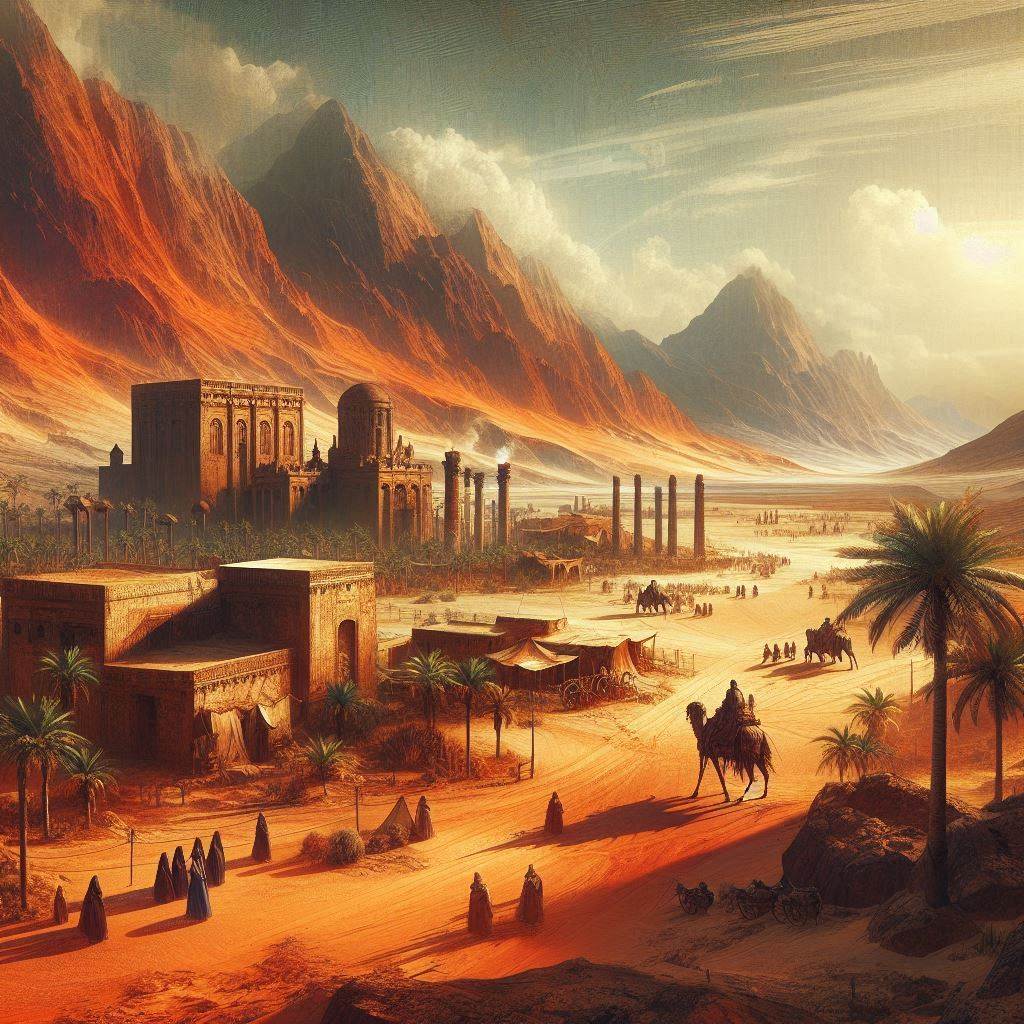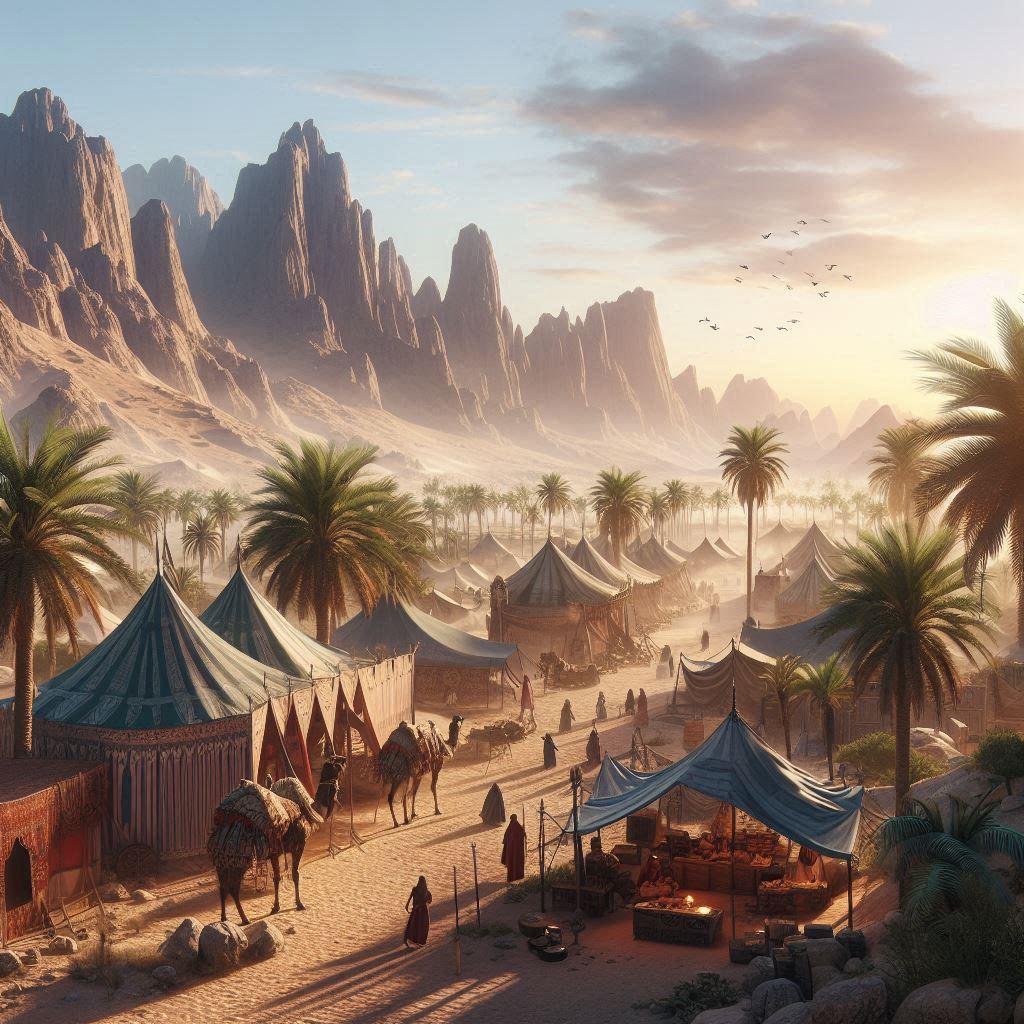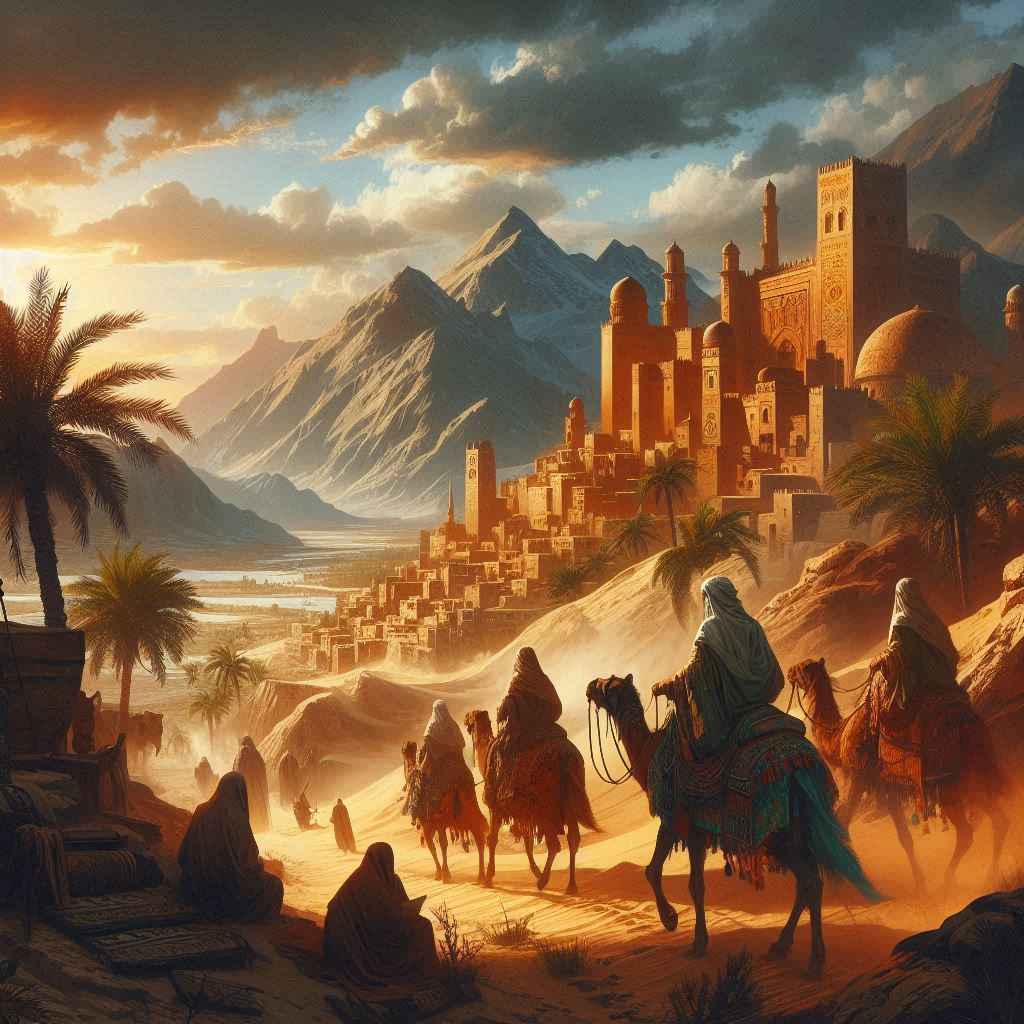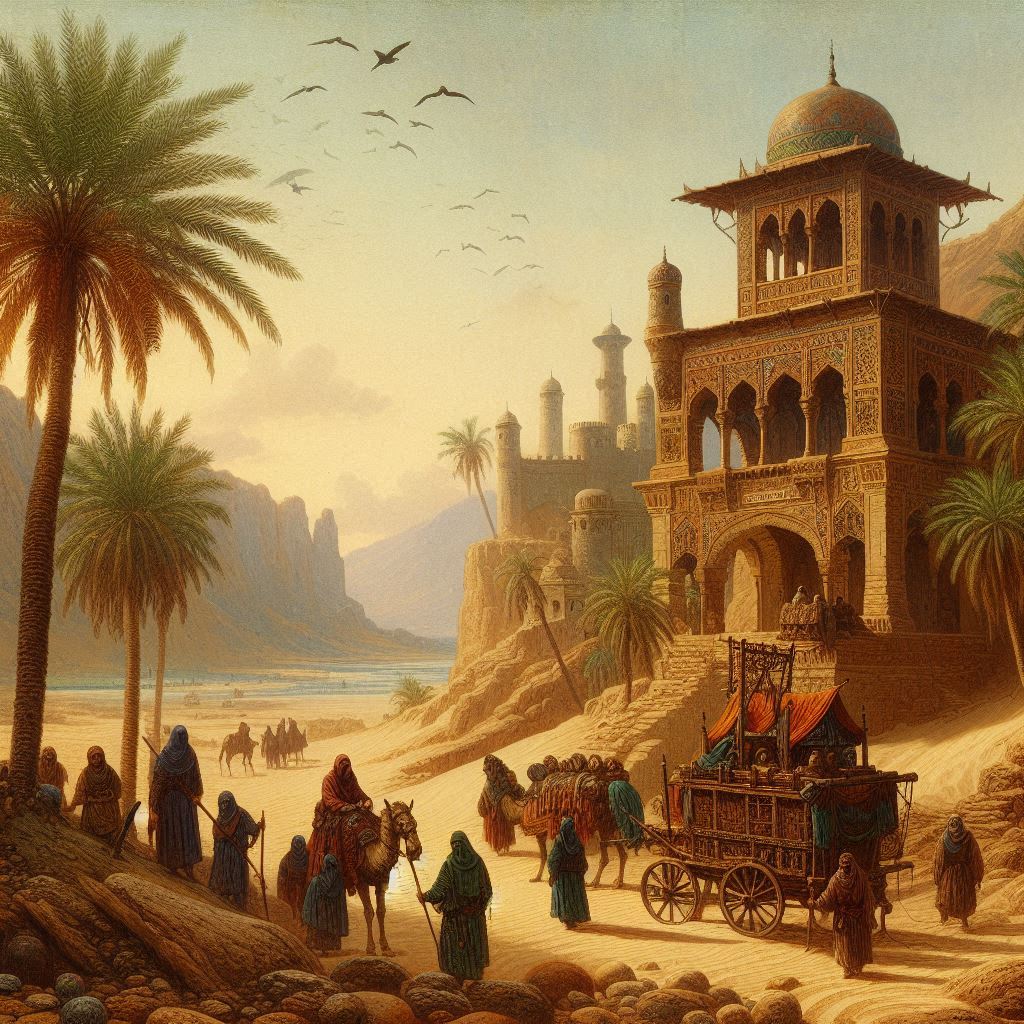Desert culture
CULTURES SKILLS
- Animal Healing
- Distance Running
- Driving
- Foraging
- Herding
- Mapping
- Read Tracks
- Sprinting
- Tracking
- Animal Handling
- Direction Sense
- Loading
- Riding
Legend
“This group has extensive knowledge of every dune type, from the massive permanents to the challenging whimsicals.”
Skjald Valgrif
Description

Desert people, known for their resilience and adaptability, live either a nomadic or settled life based on available resources. Nomadic groups follow trade routes that connect various oases, crucial for their survival and trade. Settled communities develop intricate systems for water management, agriculture, and cultural exchange. Their deep connection to the desert shapes their culture and daily lives, revolves around conserving water, finding shelter, and navigating the shifting sands.
Lifestyle: Desert dwellers are herders, hunters, and gatherers living in extended families within clan-holds. Known for their theatricality, they often resolve disputes through raiding and fighting.
Diet: Desert nomads eat a diet centred around preserved foods like dried meats and grains, supplemented by dates, nuts, and milk from camels or goats. They also forage for edible plants like cacti and desert herbs. Their diet is sparse and focused on survival, often requiring careful rationing of water and food.
Traditions and Stories: Desert dwellers have a rich oral tradition, with stories and songs that reflect their history, values, and connection to the desert. These tales often involve legendary heroes, spirits of the desert, and the adventures of ancestors.
Marriage Pattern: Desert people practice monogamous marriages, often arranged outside their family to strengthen alliances. Political marriages are common, especially among influential families.
Religion: Their religion involves a deep spiritual connection to the land and elements. They revere desert creatures, celestial bodies, and natural features that sustain life. Rituals and ceremonies often involve offerings to these entities and the telling of sacred stories.
- Religious system: Nature Worship, deities associated with sun, sand, and oases.
- God-Mortal Interaction: Ancestor spirit, belief in the spirits of ancestors guiding the living.
- Rituals: Ceremonies often involve offerings to ensure rainfall, protection from sandstorms, and rites of passage.
- Impact on Society: Religion are a source of conflict among different groups. Priests, shamans, or other religious leaders often hold positions of power, and aid shaping legal codes and social norms.
Skjald Ulrich
Craftsmanship: Desert craftsmanship, though crude, holds aesthetic appeal with its rustic charm. They create items from bronze, copper, tin, leather, yarn, and wood, often decorated with bright patterns and symbols indicating clan and family ties.
Clothing & Decoration: Desert clothing is practical, designed for sun protection. They wear loose, flowing garments made from wool and hide, often woven in bright patterns. Unique headwear and accessories shield them from sand and sun.
Armour: Desert people rarely use armour, preferring soft leather or none at all, allowing for agility and ease of movement.
Weapons: Common weapons include the sword, bow, broadsword, dagger, javelin, and spear. They are skilled in both melee and ranged combat, adapting their tactics to the desert environment.
Special Items: Desert people possess unique items such as water-conserving tools, intricate jewellery, and traditional musical instruments. Their craftsmanship often features materials that do not endure long but are highly valued for their beauty and cultural significance.
Skjald Vinotis
Time: Desert cultures follow a cyclical pattern that is determined by the sun’s position and temperature. They emphasise survival and adaptability, with events linked to scarce resources such as water and oasis supply.
Accomplishment and achievement: The survival of the tribe in harsh circumstances is crucial. Individual survival abilities and mastery of desert navigation are valued, and individual feats and significant accomplishments are honoured when they contribute to the tribe.
Authority Interacting: When dealing with authority, they are respectful but assertive. Desert leaders are admired for their wisdom and abilities to guide the people through difficult circumstances.
Fears & Inabilities: Superstitions are common, with a strong fear of gods and spirits. They are cautious of the supernatural and the unknown.
Mien: Culture has a high influence in shaping demeanor, with limited room for individual expression
Mannerism: Suspicious, self-centred, reserved, cautious demeanor, yet vocal and animated.
Prejudices: They generally dislike Nomads and Mariners, viewing them with suspicion and distrust due to historical conflicts and cultural differences.
Skjald Yell'a'Beard
Resistance: Desert people have evolved resistance to diseases common in arid regions. Their lifestyle and focus on water conservation contribute to their resilience.
Disease Resistance: Desert cultures likely have moderate to high resistance to certain diseases, particularly those common in arid environments. Their harsh living conditions and nomadic or semi-nomadic lifestyles expose them to various pathogens, but they have adapted to these challenges in several ways:
Poison Resistance: Desert cultures likely have moderate to high resistance to various poisons and toxins. This is due to their deep knowledge of the local flora and fauna, which includes both harmful and beneficial substances:
Remedies: They rely on desert plants with unique properties for remedies, as well as practices to prevent dehydration and heat-related illnesses. Knowledge of herbal medicine is passed down through generations.
Skjald Kazumix
History

Desert cultures have forged remarkable existence in the unforgiving embrace of arid landscapes. Their histories are often marked by a nomadic spirit, as they traversed vast stretches in search of water and sustenance. Yet, amidst the challenges, these cultures have flourished, developing profound knowledge of desert ecology, intricate trade networks, and unique spiritual beliefs. Ancient civilisations have risen and fallen, leaving behind enigmatic ruins that continue to inspire wonder and speculation. From towering sand dunes to hidden oases, the desert has shaped the lives and cultures of its inhabitants in countless ways. They have also developed the most tasteful dishes and brews that one can imagine; in fact, I have a skin of ‘desert-dew’ right here. Let’s have a taste, shall we?
Skjald El Mary
Cartography

Desert dwellers inhabit a diverse range of environments. Oasis towns, characterised by lush greenery and intricate irrigation systems, support thriving agricultural communities. Coastal settlements, often fortified against sandstorms, combine fishing and trade. Nomadic tribes traverse vast stretches of desert, erecting temporary encampments near water sources. In the foothills, people have carved out a living through a combination of farming, herding, and quarrying. These varied lifestyles have given rise to a rich tapestry of cultures, with specialised crafts, intricate trade networks, and unique adaptations to the harsh desert environment.
Desert dwellers inhabit diverse environments:
- Oasis Towns: Lush greenery and intricate irrigation systems support agricultural communities.
- Coastal Settlements: Fortified against sandstorms, combining fishing and trade.
- Nomadic Tribes: Traversing vast desert stretches, erecting temporary encampments near water sources.
- Foothill Communities: Combining farming, herding, and quarrying.
Skjald Sigurd
Organisation

Tribal structures are common, with leadership based on wisdom, combat prowess, or spiritual authority. Tribes are tightly knit, with strong communal bonds and a shared sense of purpose.
Skjald Sejrik
Special

Desert cultures possess advanced water conservation techniques, a deep understanding of desert ecology, and specialised knowledge of medicinal plants. Their ability to navigate and survive in the harsh desert environment is unparalleled, making them masters of their domain.
Skjald Ulrich
Last Updated on 2024-10-20 by IoM-Christian
